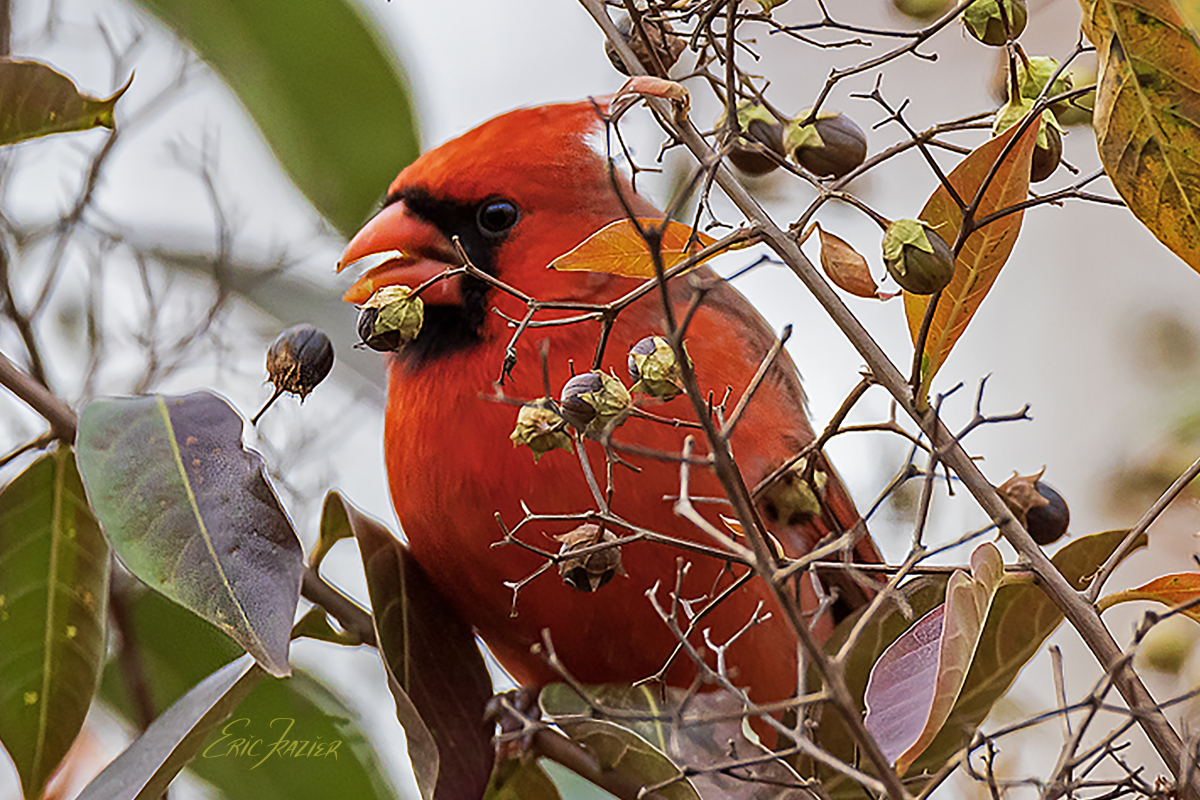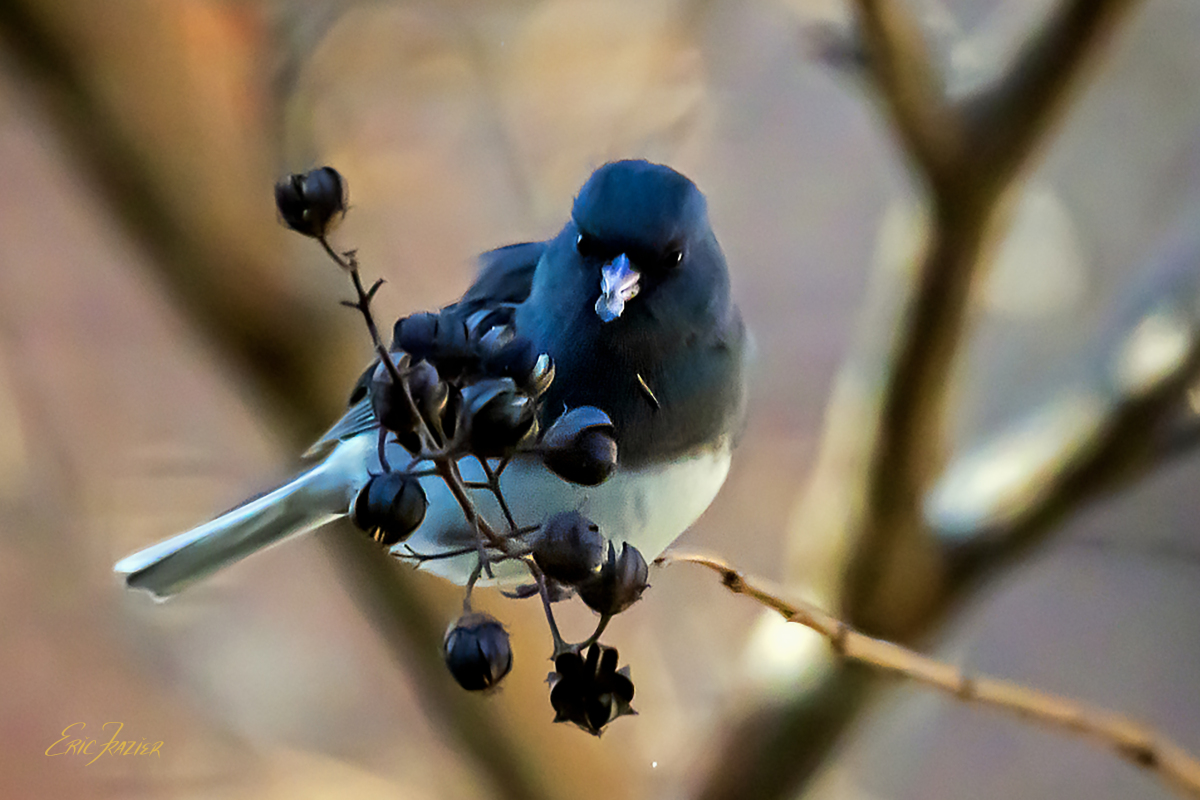Crepe myrtles don’t have typical berries, as this Northern Cardinal appeared to discover last week. I watched him pluck several of the seed pods off their branches, pinch them in his bill and spit them out. They were too large and hard to swallow whole. Instead of soft pulp, like a holly berry, the pods have segments inside like a tangerine, each with compressed layers like an onion. Pods eventually crack open into six wedges, releasing a multitude of tiny winged seeds.

This Dark-eyed Junco seemed better equipped to dine at the crepe myrtle. With his smaller bill and lacking the power to rip pods from their stems, he instead searched for ripened pods that had split open but not yet fallen to the ground. Many split pods were on smaller branches that would not support a cardinal but could be clutched by juncos, finches and the like.
According to the Smithsonian Institution, no species of crepe myrtle is native to the Southeastern United States, but birds seem to like their seeds and do not appear harmed by this non-native Asian plant.
Because juncos are mainly ground feeders, and the ground was covered with seed pods, these feathery seeds must be a treat—possibly at peak freshness for only a short time after a pod opens. Maybe that’s why this junco sports a look that says, “Move along, buddy; these are mine.”




